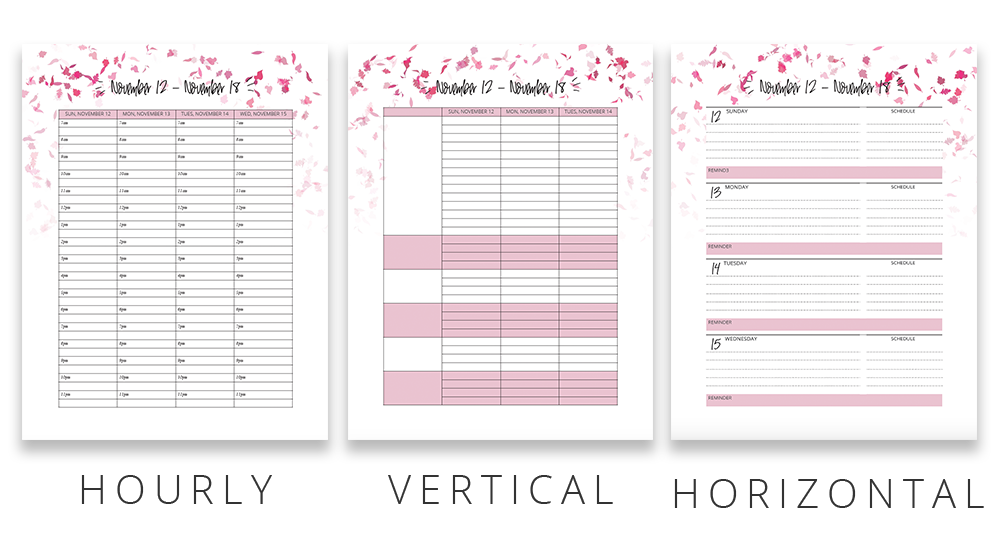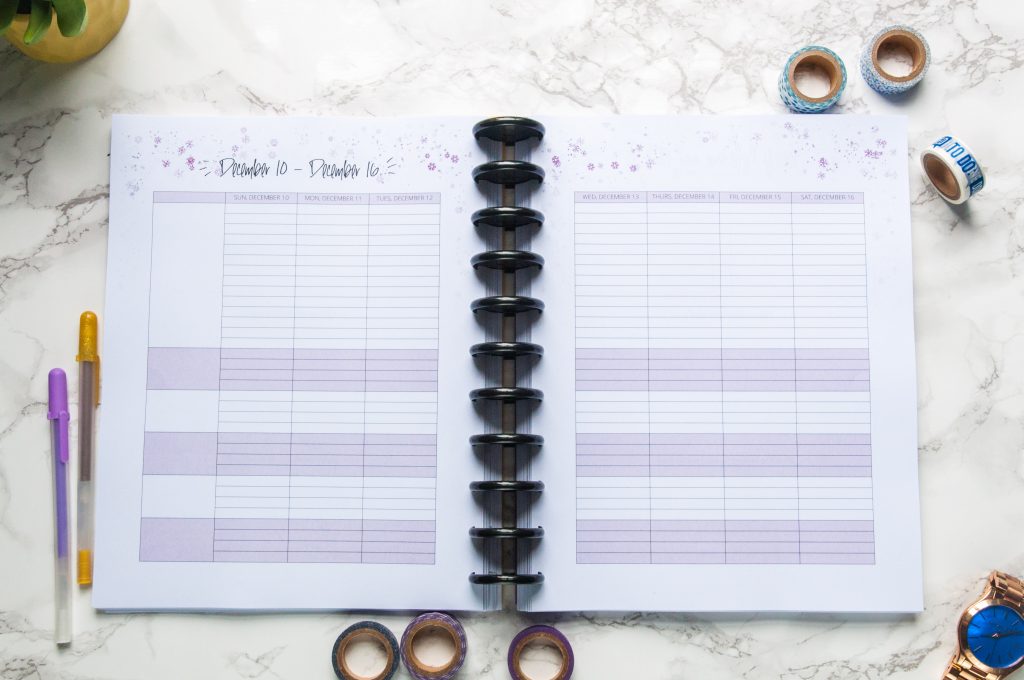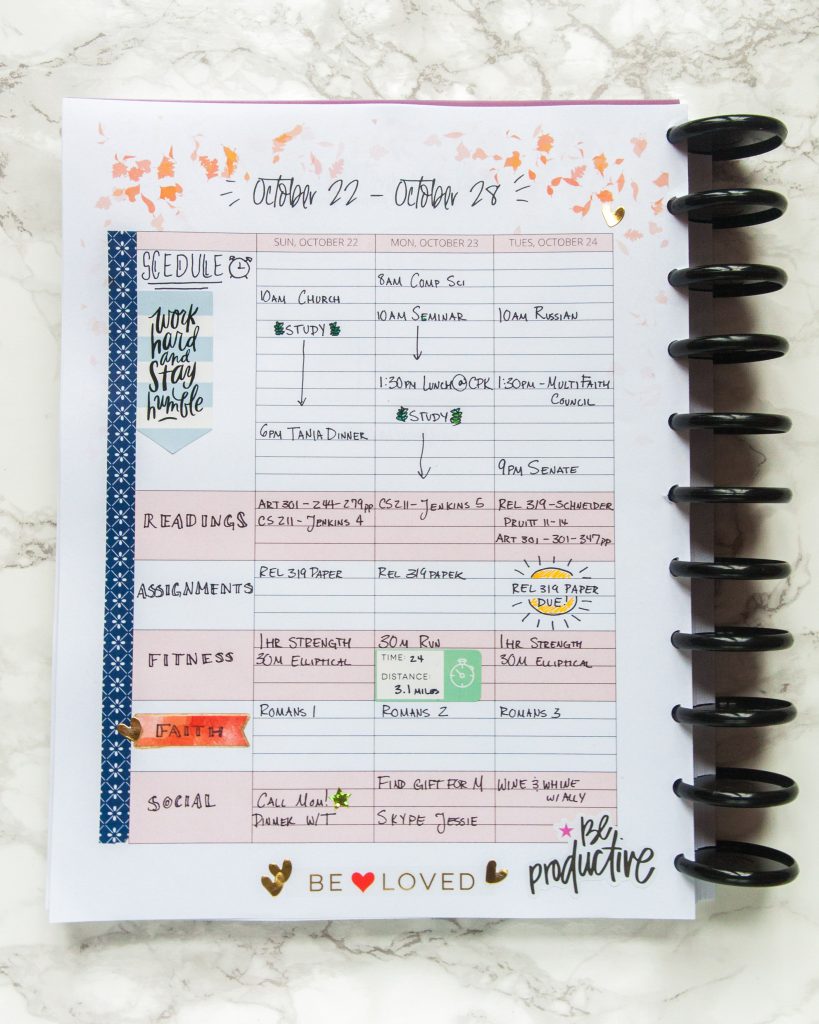The number one tool that I used to turn my life around has been a planner. If you read a lot of college blogs, you’ve probably seen many bloggers talk about them and how they’ve helped improve their grades and ease their peace of mind. But how do you choose your planner? There are three factors that I recommend taking into consideration: layout, flexibility, and cost.
Layout: Vertical, Horizontal, or Hourly
The first major factor to think about is layout. Different students benefit from different kinds of planner layouts; some people use their planner mainly as a schedule, where they keep track of their appointments and time-block their to do’s. Other people want a to do list with a schedule section, and still others prefer to have a lot of freedom in their planner so they can change it from day to day or week to week. Knowing what kind of layout works best for you is key to choosing the right planner and making the most use of it. Let’s take a quick look at three different common planner layouts and go over which one is right for you.

The first planner layout is the Vertical planner layout. Sometimes these will have a blank vertical column for each day, or one column broken up into three sections.
This one, the Vertical edition of the College Compass Student Planner, has one large section for your schedule, and five smaller sections for your classes, extracurriculars, or the different sections of your life. This kind of planner is great for someone who is juggling a lot of different areas of life, like a student athlete, a college blogger, or a student with a part-time job or volunteer position. If you compartmentalize your life into different areas, this might be the right fit for you. Examples of this type of layout are the Erin Condren and MyAgenda planners, and the College Compass Student Planner in the Vertical edition, which launches on July 31st, 2017.
Another option to consider is the Horizontal planner layout. This is a common planner layout because it leaves the user with the most freedom to structure their own schedule or to do list. This is great for creative spirits or people who need a simple planner that doesn’t impose a strict format on them. The one you see here is the Horizontal format of the College Compass Student Planner. Examples of this planner are the Lilly Pulitzer Agenda or the College Compass Student Planner in the Horizontal edition.
If you love structure, though, you might benefit from an Hourly layout. This means that the planner is broken up into an hourly schedule where you can write down all your appointments and classes. You can also schedule your to do’s if you want, in a system called time blocking. This is great for students who thrive on structure and clear instructions. You can find this layout in the Day Designer, or in the Hourly edition of the Student Planner.
Flexibility: Size and Format
The next major factor to consider is flexibility. When you buy a planner, you need it to fit you and your life, not the other way around. If you need a small planner that you can take everywhere, buy a small planner or print your planner at half-size. If you want a planner that has space for your thoughts and reflections, choose one with that option.
And if you’re looking for a lot of flexibility, even going so far as the ability to change layouts from week to week depending on what you need, a printable planner may be a good fit for you. The benefit of a printable planner is that you can print it week by week, so that if you need an Hourly layout for finals but a Horizontal layout all summer, you can do that. If you thrive on structure, a hard copy planner like a Day Designer or a MyAgenda is a great idea. But if your life is always changing and you need a planner that can keep up, consider going printable with a planner like the Student Planner.
Cost
Finally, consider cost. Planners can range anywhere from $1 at the Dollar Store to $75 for a deluxe, high-end planner. Obviously, as college students, cost-effectiveness is important, so consider what you can realistically afford to spend on a planner and balance that with the value that you’ll get from it. If you find the perfect planner for you, don’t be afraid to splurge a little; that small investment can make a huge difference in your life.
Taking these factors into consideration as you choose your planner will help you make the right choice for you. In the meantime, let me know:





This is so helpful! Thanks 🙂